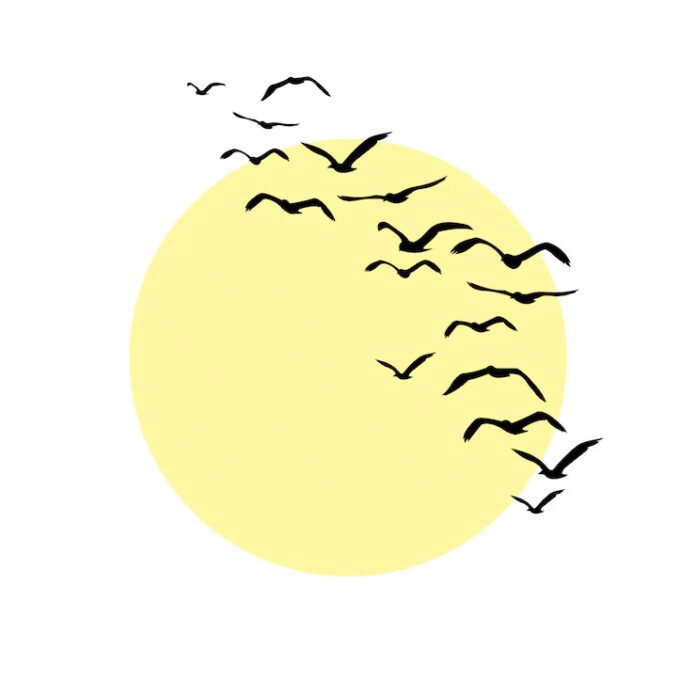Introduction
Observing the sky, have you ever wondered why birds fly in a certain way? According to the majority of people, this is a flock of birds following a leader. Observing a flock of birds flying in a V shape is far more interesting and complex than most people realize.
Birds fly in a precise ‘V’ pattern for several reasons. Flying is a technique of mobility used by birds for migration, breeding, feeding, and predator avoidance. This “V” configuration in flight is a distinctive behaviour of birds. It has been researched in ornithology for decades.
Regarding the potential benefits of these formations, two ideas have been made by biologists who have studied avian flight. The first is that formation flying offers an energetic advantage. The alternative theory proposes that flock members can view each other’s whereabouts and flight paths by flying in V formation.
What is body flight?
Bird flight can be defined as a locomotion mode. Birds inculcate it after taking off. In the animal kingdom, it is considered one of the most complex locomotion forms. Flight helps birds in feeding. It also helps in breeding along with migration and avoiding predators.
Force produced by the action of airflow in the wing is called lift. The force that is opposite to the motion’s direction is a drag.
Birds flying in V formation: Explained
When a bird flies, it flaps its wings, and air emerges from each wingtip as a whirling vortex. These air rolls cause the air directly behind the bird to be continuously pushed down while the air to its sides and behind is constantly pushed upward.
If some birds fly in this formation, they benefit from a free lift. It allows them to save energy by savouring the airflow produced by the birds flying alongside them and using their wingtips to create their airflow. The need for food will decrease. The duration of the journey will also shorten.
When flying in a V formation, birds use half the energy they would if they were flying alone or in another formation. Because it uses less fuel to fly and because the flyer in front of it creates extra lift when flying higher. This is also the reason why air force planes adopted the same v-shape.
How do birds choose the flock leader?
Each bird contributes equally to the formation of the V during flight. Birds are kept stress-free as a result, and they also gain additional advantages. The flock’s leader returns to the flock after it is worn out, and another bird from the group takes its position. This continues through the migration procedure.
Cooperation is seen in this situation. Each bird has a turn to lead the flock before reversing direction to let its wings rest. This lowers its energy consumption. Typically, the healthier birds form the front of the V formation before the others.
What causes birds to fly in a V-format? Know the motives
In times of war, military men as well as birds adopt V-Formation. The V-Formation has been utilized in numerous conflicts, starting with Spartans using it in the Middle Ages and continuing through modern fighter jets and naval combat.
This configuration is used by people, birds, and aeroplanes for comparable purposes. You can see in front of you when you make a V-formation. The reasons behind a flock of birds flying in a V shape, however, are more impressive:
Flying over great distances is made simpler by V formation
Birds can synchronize their wing beats by forming a V. It has been seen that the heart rates of the birds in the back are lower than those of the birds in the front. Downwash is the term for the wind being pushed downward by a bird’s flapping wings.
The effect is that the wings can travel upwards quite readily (from the high-pressure region to the low-pressure region). It’s known as the upwash. Birds in the rear benefit from this upwash because it lowers their energy use.
A flock of birds is usually led by the strongest of them
Henri Weimerskirch observed that pelicans flying in the back of the V had lower heart rates and flapped less frequently than those flying at the front flap during research he conducted in 200. He used heart rate monitors attached to the birds.
As a result, the flock is usually led by the stronger birds. They are healthier because they consume less energy when flying in a V formation than they would if they were flying separately. Less anxiety affects the birds.
Recommended Articles:
Why Do We Have Two Eyes?
Physics – Wiedemann Franz Law
All About Work and Energy
Working Principle of an Electrical Fuse
Yield Strength
Birds may fly in a V formation for one of two reasons: either it makes flight easier, or they are just following the leader. Finches, different types of hummingbirds, and sparrows all migrate, but none of these birds flies in a v-formation because they are too small to benefit from the energy-saving effect of doing so. Skein Formation is the name given to these arranged birds in a line. Throughout the migratory flight, a flock of birds will rotate and share the lead of the V. As a result, the birds in the back will take control as the leaders tire and fall further back into the flock. Why do Birds fly in a V format?<br />
FAQs
Why do birds fly in V shape formation?
Do all the birds fly in V formation?
What are birds flying in V formation called?
How do birds decide who leads the V formation?
